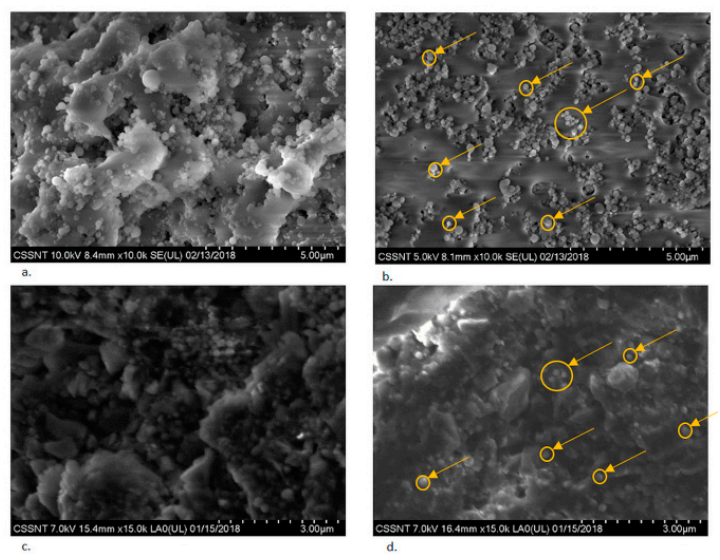Researchers from Turkey and Romania have come together recently to finish a project as they evaluate patients in a follow-up study, outlined in ‘Eighteen Months Follow-Up with Patient-Centered Outcomes Assessment of Complete Dentures Manufactured Using a Hybrid Nanocomposite and Additive CAD/CAM Protocol.’ Initially, patients received 3D printed dentures made from a composite material, poly(methyl methacrylate) (PMMA)–nanoTiO2.
Thirty-five patients participated in the study, as researchers evaluated the effectiveness of their dentures later. The new material being used is critical as previously other materials and techniques reflected poor fit and resistance. Here, the authors were relying on innovative nanotechnology for the creation of materials with ‘improved characteristics.’
“Due to the high demand for rapid, accurate, and resistant material suitable for long‐term 3D‐printed complete dentures manufacturing, we proposed an improved nanocomposite based on poly(methyl methacrylate) with titanium dioxide nanoparticle inclusions,” explained the authors. “The newly obtained poly(methyl methacrylate)–TiO2 matrix allowed a material with proven antimicrobial action, smooth surface aspect, and better mechanical and thermal characteristics to be obtained, suitable for use with additive technology.
“In order to assess the improved hybrid nanocomposite in clinical environment, a protocol for long‐term DLP 3D‐printed complete denture manufacturing was proposed, and an objective clinical assessment and morphological analysis was performed.”
Along with the long-term clinical assessment and analysis, the researchers also asked each participant to fill out a questionnaire (49 questions) regarding their ‘subjective perceptions’ about treatment. Questions were relevant to:
- Functional limitation
- Pain
- Psychological discomfort
- Physical disability
- Psychological disability
- Social disability
- Handicap
The dentures were created on an EnvisionTEC Perfactory® 3D printer, featuring a layer thickness from 25 μm to 150 μm. Post-processing required dentures to be soaked in a solvent quickly, and then supports were removed, the dentures were polished and then subjected to a light cure bath in post-curing. Patients received their dentures at their third visits, along with post-operative instructions.

SEM images of (a) Dent 100 (not polymerized) and (b) newly obtained nanocomposite (not
polymerized). Low‐angle backscattering electron image of (c) 3D‐printed E‐Dent 100 and (d) newly
obtained 3D‐printed nanocomposite. Titania nanoparticles are marked with yellow circles in subfigures (b) and (d).
Two sets of dentures were broken in the first six months of use, and patients each received a new set to replace them.
The dentures were studied 18 months later in the assessment, and the researchers noted ‘satisfactory uniformity,’ with no defects. Patients noted ‘significant improvement’ related to their oral health as the dentures provided good retention and stability.
“The proposed workflow with the nanoTiO2 composite material used is a viable treatment option for patients diagnosed with complete edentulism,” concluded the researchers.
“The results indicate that the OHRQoL was significantly improved, and patients’ satisfaction scores for aesthetic, speech, masticatory efficiency, hygiene, and comfort were significantly higher upon new denture insertion, with these improvements being maintained throughout the entire evaluation period.”
3D printing of dentures continues to be improved around the world, offering an incredible opportunity for medical technicians and patients alike, from those that are made to prevent infection, to removable partials, those that are 3D printed rapidly, and much more.
What do you think of this news? Let us know your thoughts! Join the discussion of this and other 3D printing topics at 3DPrintBoard.com.
[Source / Images: ‘Eighteen Months Follow-Up with Patient-Centered Outcomes Assessment of Complete Dentures Manufactured Using a Hybrid Nanocomposite and Additive CAD/CAM Protocol’]
Subscribe to Our Email Newsletter
Stay up-to-date on all the latest news from the 3D printing industry and receive information and offers from third party vendors.
You May Also Like
Industrial Giant Ingersoll Rand Leads $19M Round Backing Inkbit’s AI-Driven 3D Printing
Inkbit, the Massachusetts-based original equipment manufacturer (OEM) of multi-material, AI-integrated 3D printers, has closed a $19 million financing round. Ingersoll Rand, a US giant in the industrial equipment sector, led...
3D Printing Unpeeled: Digital FDM Filament for Functional Gradients
Just published in Nature, a paper by a Seoul National University team looks at “3D printing with a 3D printed digital material filament for programming functional gradients.” Sang-Joon Ahn, Howon...
3D Printing Unpeeled: $5000 Cold Spray 3D Printer, Roland DGA & Living Materials
The AeroForge is a $5000 cold spray metal printer for copper made by a student team at Rice University. In a paper for ACS Central Science a team from Nanjing...
3D Printing News Briefs, April 27, 2024: Research, Digital Dentistry, Cycling, & More
We’re starting today’s 3D Printing News Briefs with some research into 3D printed luminescent quantum-dot polymer architectures and free-form laser beam shaping, and then on to an open source 4-axis...



































